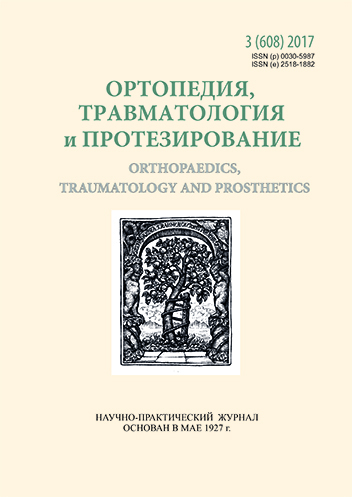Main principles of surgical treatment in malignant spinal tumors
DOI:
https://doi.org/10.15674/0030-598720173105-111Abstract
The author highlights the modern vision of the basic principles of replacing bone and joint defects during surgical treatment of patients with malignant tumors of bones. He emphasizes the need and effectiveness of an interdisciplinary approach to the definition of a tumor process and the use of a full-scale preoperative examination and all treatment methods in accordance with approved international protocols. One of the main methods of treatment of malignant bone tumors is considered organ salvage surgery, and only in the presence of contraindications - amputation. The classification of surgical interventions, their characteristics, difficulties during execution, application for replacement of postreaction defects of bones and joints of allografts or modular tumor endoprostheses is given. The necessity to adhere to the basic principles of bone oncosurgery and protocols of specific therapy for successful treatment is emphasized.Downloads
How to Cite
Issue
Section
License
Copyright (c) 2017 Oleg Vyrva

This work is licensed under a Creative Commons Attribution 4.0 International License.
The authors retain the right of authorship of their manuscript and pass the journal the right of the first publication of this article, which automatically become available from the date of publication under the terms of Creative Commons Attribution License, which allows others to freely distribute the published manuscript with mandatory linking to authors of the original research and the first publication of this one in this journal.
Authors have the right to enter into a separate supplemental agreement on the additional non-exclusive distribution of manuscript in the form in which it was published by the journal (i.e. to put work in electronic storage of an institution or publish as a part of the book) while maintaining the reference to the first publication of the manuscript in this journal.
The editorial policy of the journal allows authors and encourages manuscript accommodation online (i.e. in storage of an institution or on the personal websites) as before submission of the manuscript to the editorial office, and during its editorial processing because it contributes to productive scientific discussion and positively affects the efficiency and dynamics of the published manuscript citation (see The Effect of Open Access).














